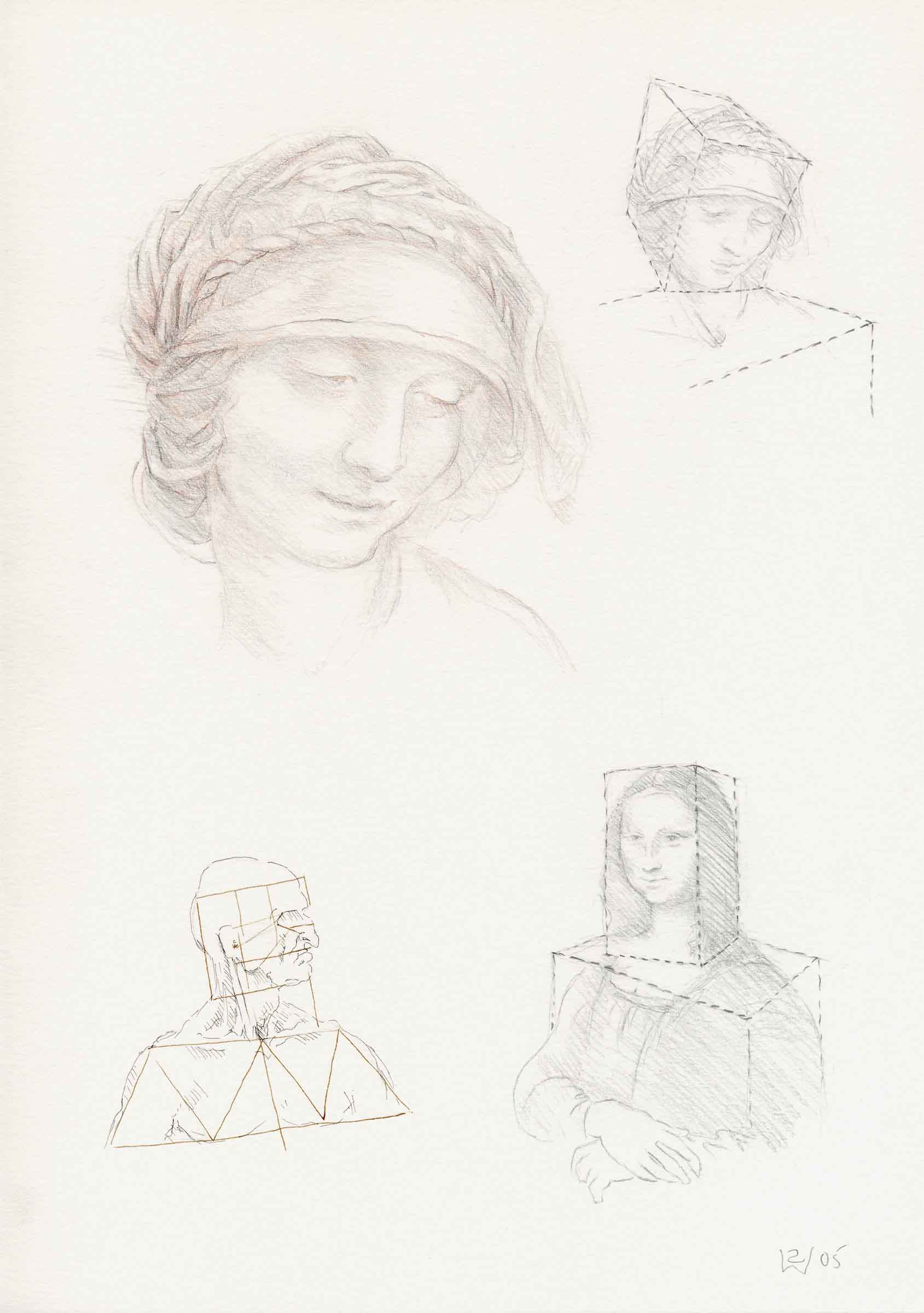Heads Turned on the Block: Heads of St. Anne and other da Vinci Characters

© Susan Dorothea White
Heads Turned on the Block: Heads of St. Anne and other da Vinci Characters 2005pencil, pen and conté
29 x 21 cm
Collection of the artist
From Draw Like da Vinci: The graceful turn of the head is a distinctive feature of Leonardo. This movement is the hidden beauty that we respond to in his art. Already as a student, Leonardo painted an angel with a turn of the head that earned the praise of his master Verrocchio. The important muscle that turns the head is prominent at the side of the neck; it passes obliquely from behind the ear and forks to attach to the breastbone and collarbone. When the muscle shortens on one side, it turns the head to the other. When composing portraits, follow our master and turn the head. Allow the eyes to lead the movement. This natural human action is seen repeatedly in Leonardo's art.
The head and torsos of St Anne and Mona Lisa are placed in blocks to demonstrate the movement. Notice the prominent ridge of the man's head-turning muscle as he looks to the left. St Anne's head is both turned and tilted; her right eye and left shoulder are in the foreground. da Vinci uses the same tilt and turn of the head for the Virgin in his 'Adoration of the Magi' (page 30). Critics often disparage the drawing of St Anne and da Vinci's Madonnas, misinterpreting the sublime expression of a doting mother that da Vinci obeserved and understood.